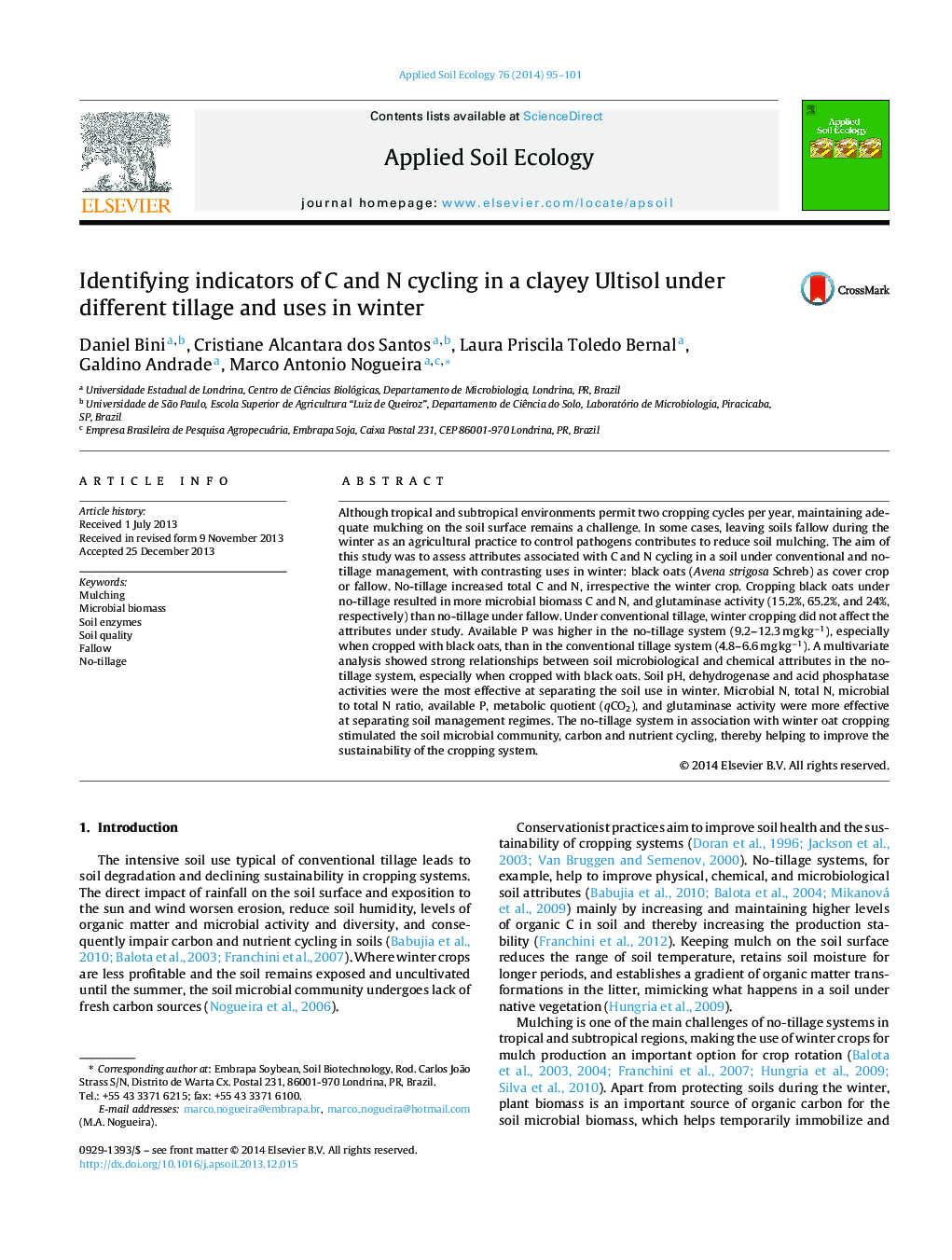| کد مقاله | کد نشریه | سال انتشار | مقاله انگلیسی | نسخه تمام متن |
|---|---|---|---|---|
| 4382265 | 1617807 | 2014 | 7 صفحه PDF | دانلود رایگان |

• Mulching is pivotal to improve sustainability in tropical and subtropical soils.
• No-tillage increased both total and microbial C and N in soil.
• No-tillage associated to oat as mulching crop in winter increased P in soil.
• N-cycling attributes were more effective to separate soil use and management.
• Glutaminase activity was very sensitive indicator of soil management.
Although tropical and subtropical environments permit two cropping cycles per year, maintaining adequate mulching on the soil surface remains a challenge. In some cases, leaving soils fallow during the winter as an agricultural practice to control pathogens contributes to reduce soil mulching. The aim of this study was to assess attributes associated with C and N cycling in a soil under conventional and no-tillage management, with contrasting uses in winter: black oats (Avena strigosa Schreb) as cover crop or fallow. No-tillage increased total C and N, irrespective the winter crop. Cropping black oats under no-tillage resulted in more microbial biomass C and N, and glutaminase activity (15.2%, 65.2%, and 24%, respectively) than no-tillage under fallow. Under conventional tillage, winter cropping did not affect the attributes under study. Available P was higher in the no-tillage system (9.2–12.3 mg kg−1), especially when cropped with black oats, than in the conventional tillage system (4.8–6.6 mg kg−1). A multivariate analysis showed strong relationships between soil microbiological and chemical attributes in the no-tillage system, especially when cropped with black oats. Soil pH, dehydrogenase and acid phosphatase activities were the most effective at separating the soil use in winter. Microbial N, total N, microbial to total N ratio, available P, metabolic quotient (qCO2), and glutaminase activity were more effective at separating soil management regimes. The no-tillage system in association with winter oat cropping stimulated the soil microbial community, carbon and nutrient cycling, thereby helping to improve the sustainability of the cropping system.
Journal: Applied Soil Ecology - Volume 76, April 2014, Pages 95–101